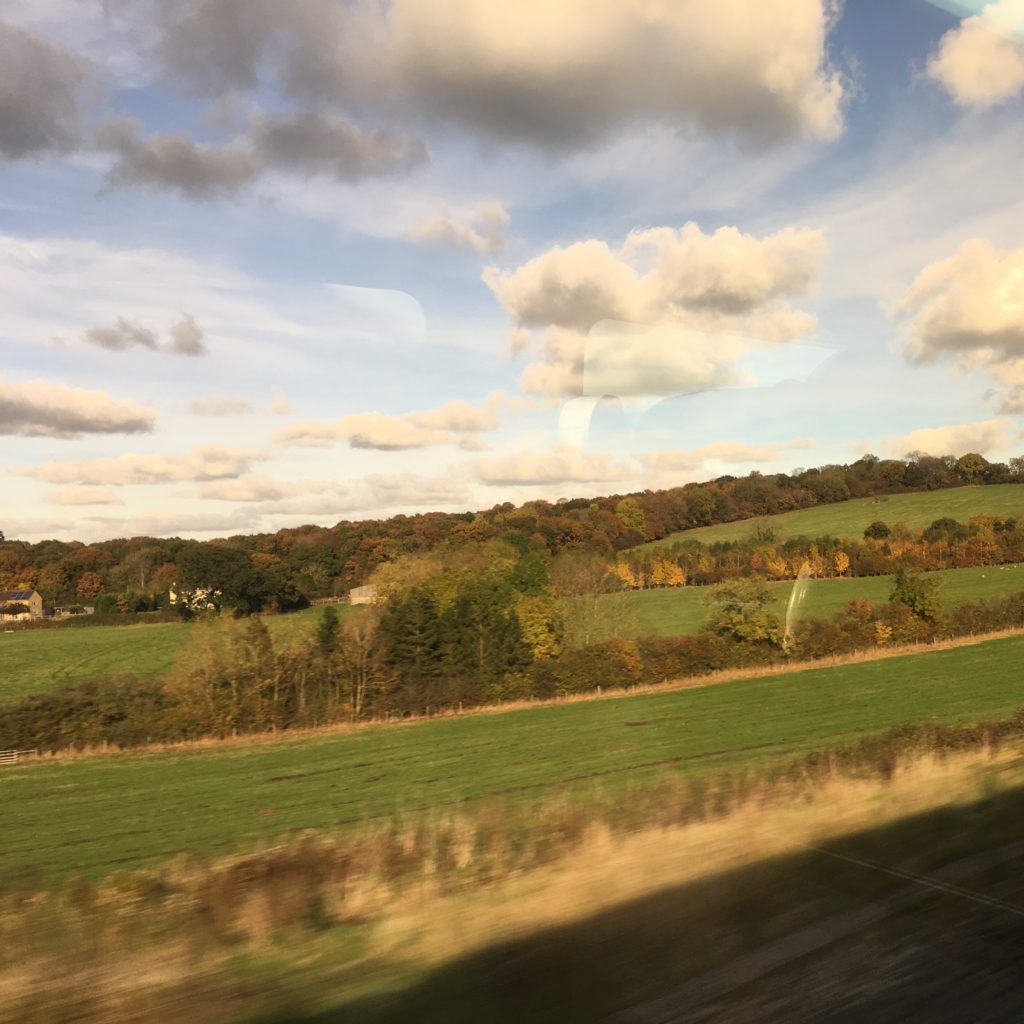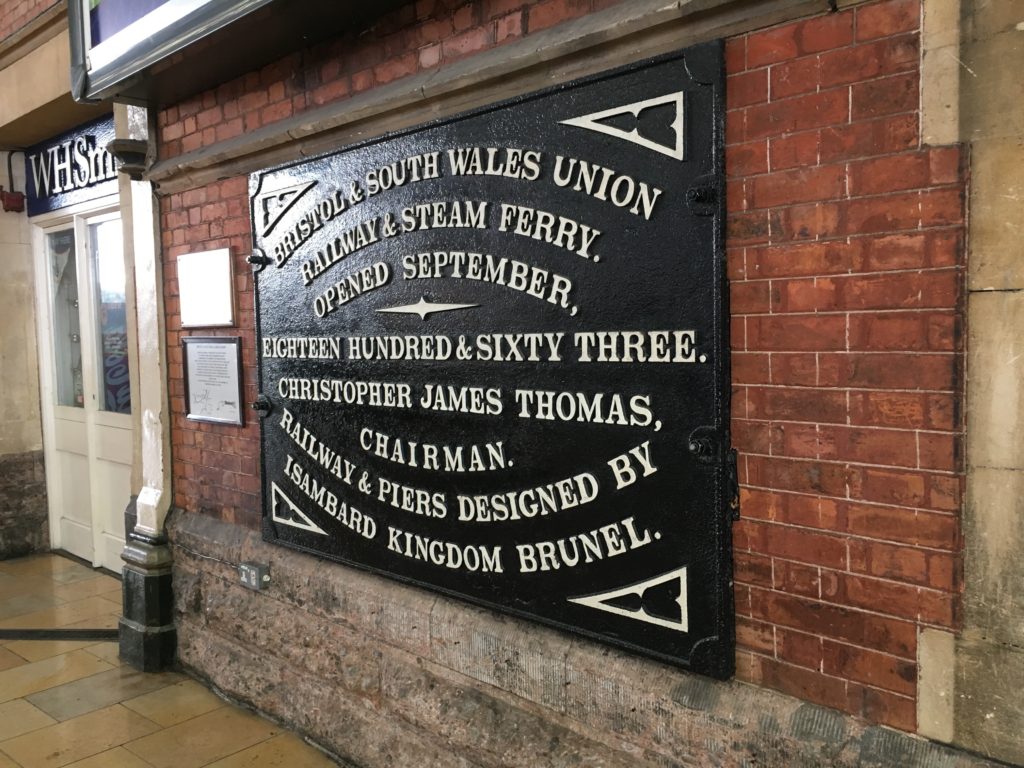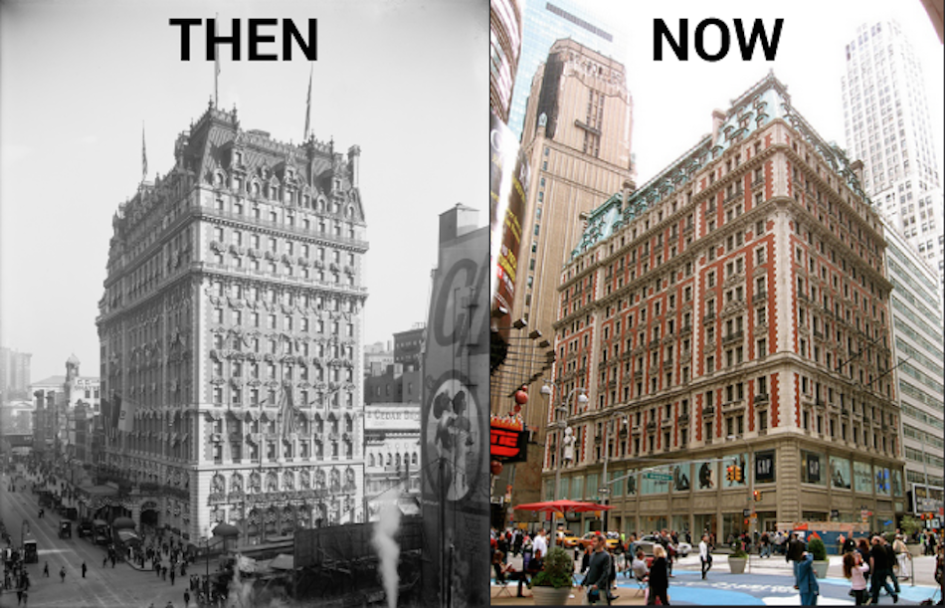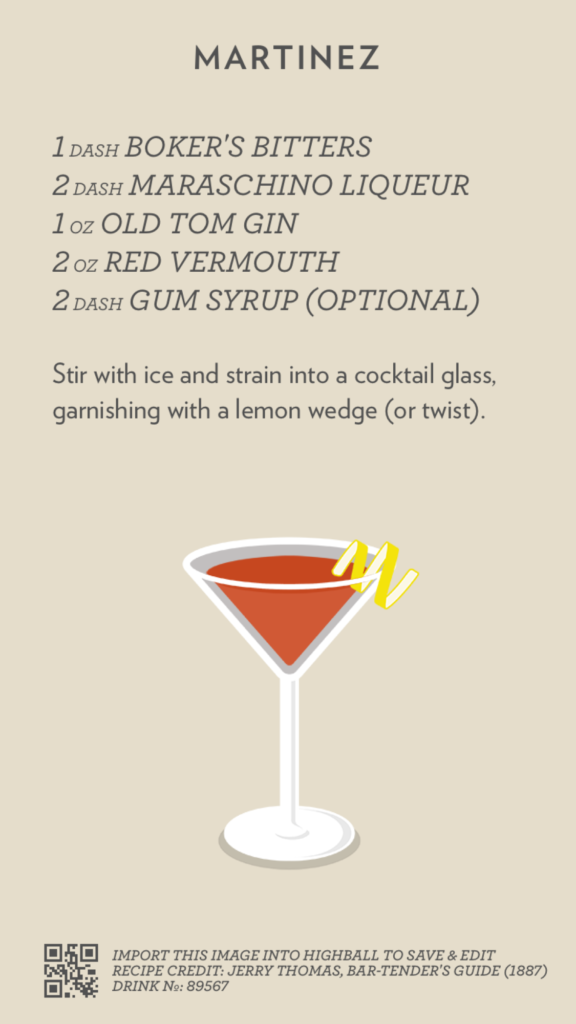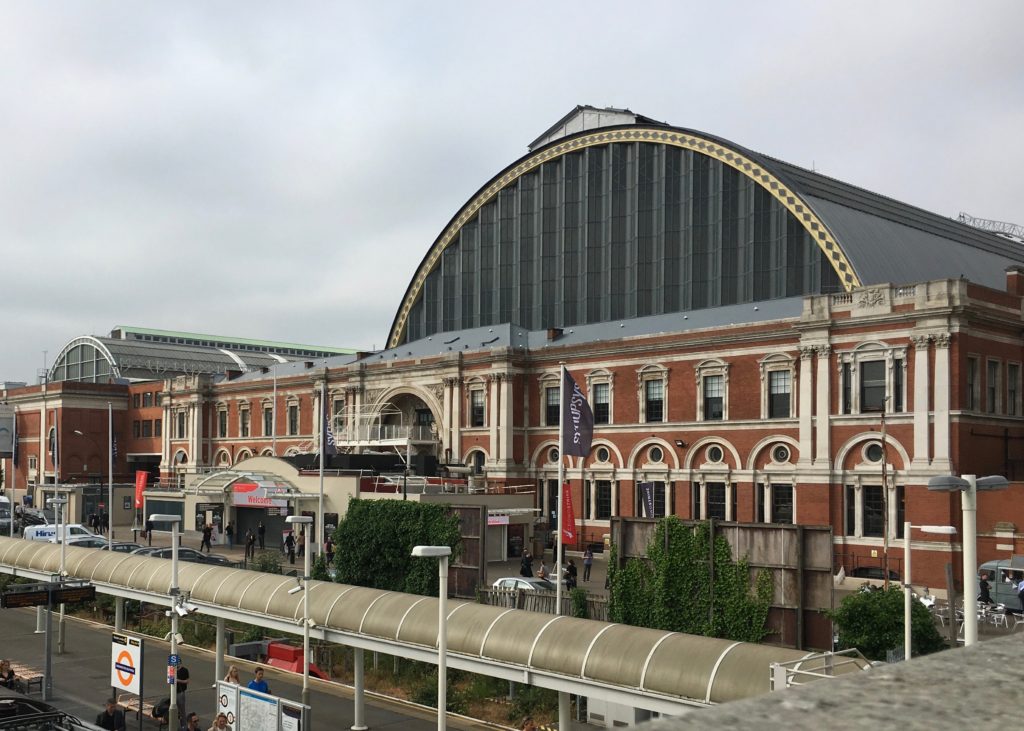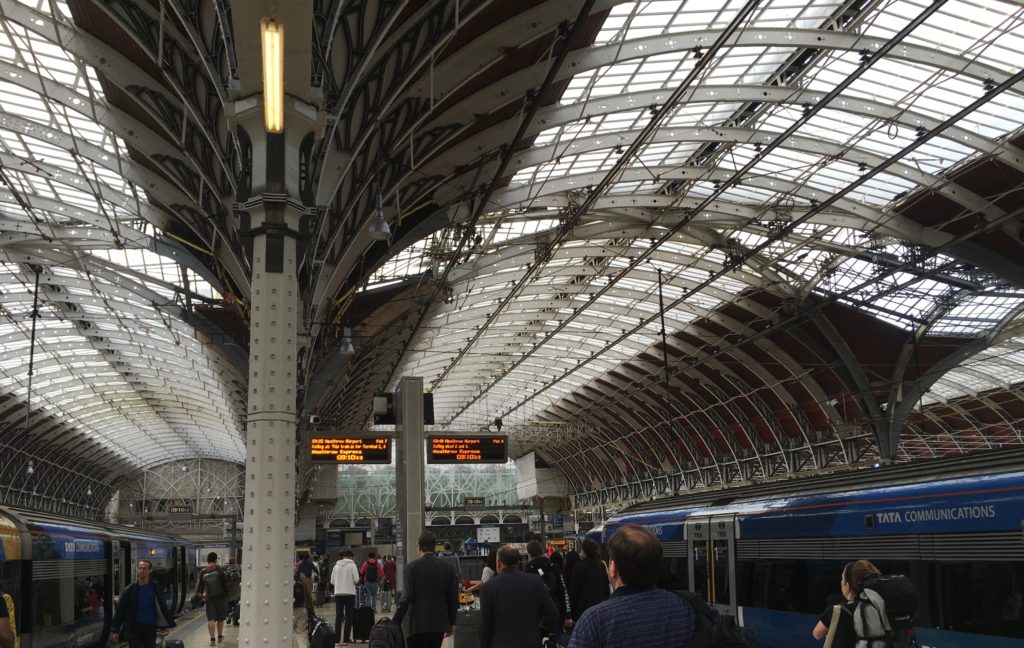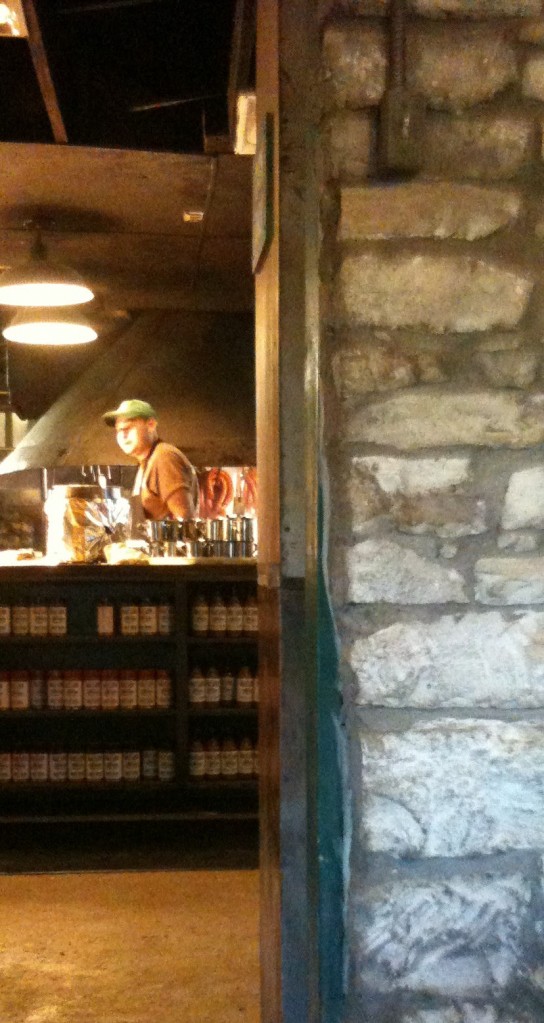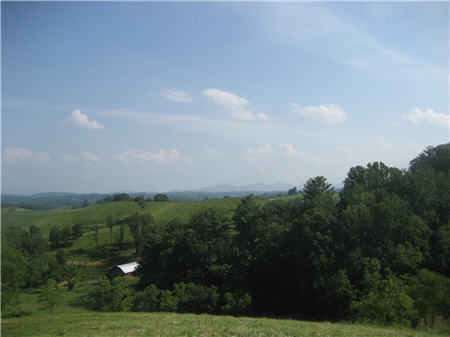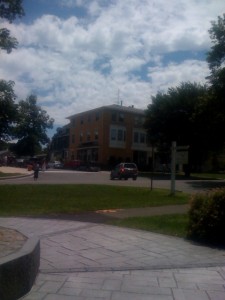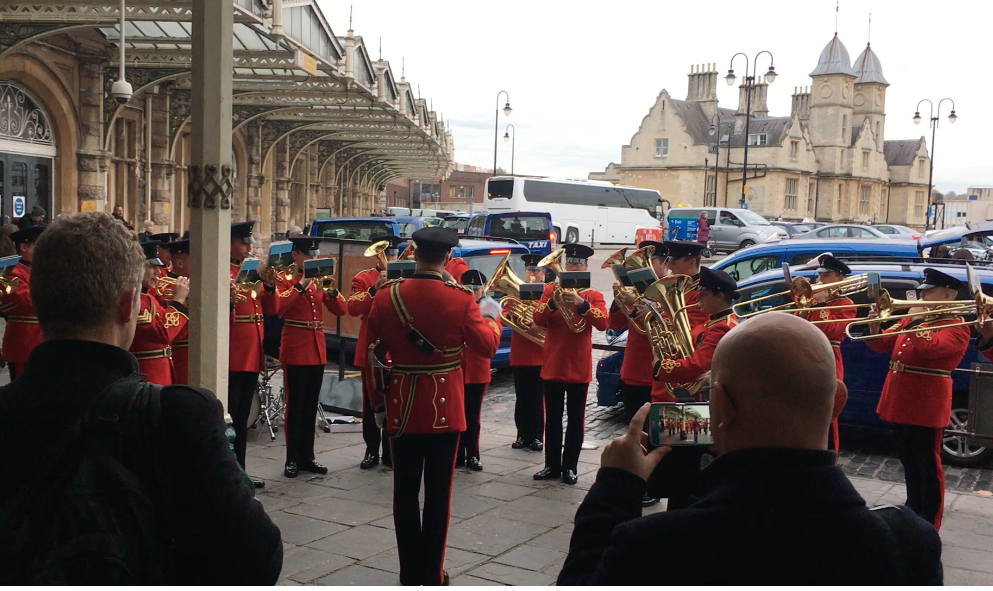
Traveling on the Great Western Railway along Brunel’s line from Bristol to Paddington, my trip was bookended by brass bands. My Uber driver dropped me off near the front entrance of Bristol Temple Meads, and I noted the red-coated soldiers near the door at about the same time I realized they were holding brass instruments. They began playing a soft ballad as I walked inside to sort out my ticket.
A few minutes later, as the trumpet’s line climbed up to a surprising apex, it became clear: this was no ballad. This was Bowie’s “Life on Mars?”
As I stepped back to the door of the station to listen I realized that the band was surrounded by blue-coated men and women holding poppies and donation boxes. And the context clicked into place for me.
In America, the reason for the association between veterans and the cheap paper poppies on Veterans Day is not top of mind for most. Here, where so many young men died in Flanders Fields almost 100 years ago, it’s never been forgotten. This was the way the British veterans kept the memory of that awful sacrifice alive.
At the other end of the Great Western Railway line in Paddington Station was another brass band in red coats, these wearing the bearskin hats of the Queen’s Guard. They were playing a theme from a TV western. The music lacked the yearning of “Life on Mars?” but it didn’t matter; travelers were donating anyway.

